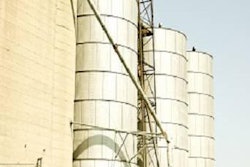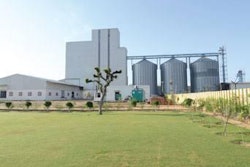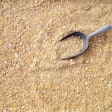
There is no question about pelleting offering specific benefits, as there is no question about pelleting increasing feed cost. Thus, the balance of this proposition answers the question whether pelleting is a profitable or not. But, this is not the goal of our discussion here. What we must answer with clarity is whether pelleting is needed or not. In other words, is there a scenario under which pelleting is a must (given the extra cost and above benefits) that will prevent a reduction in profitability beyond the cost of pelleting?
Let’s examine some interesting cases.
1. Piglet feeds. There is voluminous marketing material that emphasizes the need for pelleted feed for piglets, especially after weaning. In fact, there is even a notion that small pigs require small (and thus more expensive) pellets. Indeed, pelleting will improve feed digestibility, but there is no real need for piglet feed to be pelleted. In fact, there are cases where pelleted feed has been implicated in exacerbate the problem of post-weaning diarrheas, whereas switching to a coarse meal diet appeared to resolve this issue. Thus, beyond the typical pelleting benefits, piglet feeds do not benefit from being pelleted. In addition, there is no real scientific background regarding the issue of pellet size. In fact, in several studies, piglets were able to perform equally well with pellets even up to 12mm.
2. Sow feeds. Here we need to bring up the volume-density issue with some sow feeds. First, we have gestating diets high on fiber, often exceeding 8 percent. Such diets are difficult to handle, store, transport and feed. If this is the case, then a large pellet (or cube) is a must. Using a low-cost, high-fiber ingredient can bring considerable savings, to the point that pelleting cost is no longer an issue. Second, we have the problem of low feed intake (compared to needs) during lactation. In this case, a pelleted diet may contribute towards higher feed intake (due to lower volume of pelleted feed). Given the importance of high feed intake that leads to increased litter weaning weight and enhanced subsequent reproductive performance, then pelleting cost can be retrieved easily from such indirect benefits.
3. Layer diets. Some egg producers prefer pelleted (or crumbled) feed, whereas others will avow by nothing else than mash feed. Layers, and birds in general, are feed pickers, and as such they tend to select and pick larger particles, ignoring finer particles and powdered material. If feeds contain a mixture of coarse and fine material, and feed separation becomes an obvious problem, then pelleting is the only solution. Otherwise, if feed is ground to a common (medium) particle size, and coarse grit or limestone is offered during off-feeding hours, mash feeds will perform equally well. Pelleting is also a must for layers receiving diets with high levels of fibrous ingredients to maintain their feed intake, especially during summer months.
4. Unpalatable feeds. It might come to the point when a highly unpalatable ingredient should be used for cost reasons. Such ingredients often contain other anti-nutritional factors, but their cost can be so enticing that it might be worth testing the balance between feed cost and animal performance. In those cases, pelleting will mask a good part of the off-taste, but the complete solution to this problem should also include the use of palatants and other measures that minimize the impact of such ingredients.
5. Floor-feeding. When feed is spread on the floor for animals to pick up, then a mash diet will create nothing but dust, mud and chaos. In these cases, cubes (pigs) or pellets (poultry) are essential. Pigs are usually fed in feeders, but group-housed sows and outdoor raised pigs might be fed on the floor. In contrast, it is highly unlikely for birds raised in typical commercial facilities to be fed on the floor (although some recommend spreading some wheat on litter for free-range layers). Nevertheless, outdoor raised poultry and backyard poultry production often feed on the ground making the use of pellets a must to prevent feed wastage.
6. Broilers and growing-finishing pigs. These animals do not require pelleted feed. In these animals, a high growth rate is deemed essential to maximize profitability. Thus, not even pelleting of high-fiber diets applies to broilers and fast-growing pigs. Nevertheless, if feed cost is extremely high, and energy (pelleting cost) is low, then the balance of improved growth from pelleting versus pelleting cost must be re-evaluated. As this balance is based on a meager 5 percent improvement in growth rate (at best), it is not often the case when one sees pelleted feeds for these animals.
7. Salmonella-free feeds. Here we have a non-nutritional reason that imposes heat treatment for controlling Salmonella (and other heat-sensitive bacteria). In this case, it has already been considered (or regulated by law) that heat treatment overrides any cost-profit concerns based on mere nutritional grounds. In these cases, heat treatment is often so excessive that the nutritive value of feed is considerable diminished. Pelleting is a common method of treating feed for pigs and poultry. Although it has certain nutritional benefits, it also brings about an increase in feed cost. As such, pelleting is a cost-benefit proposition. But, in certain cases pelleting becomes a must to overcome another serious problem or overcome a difficulty, or even take advantage of an inexpensive material. In other cases, pelleting is part of the marketing process, and as such it must be evaluated accordingly.















